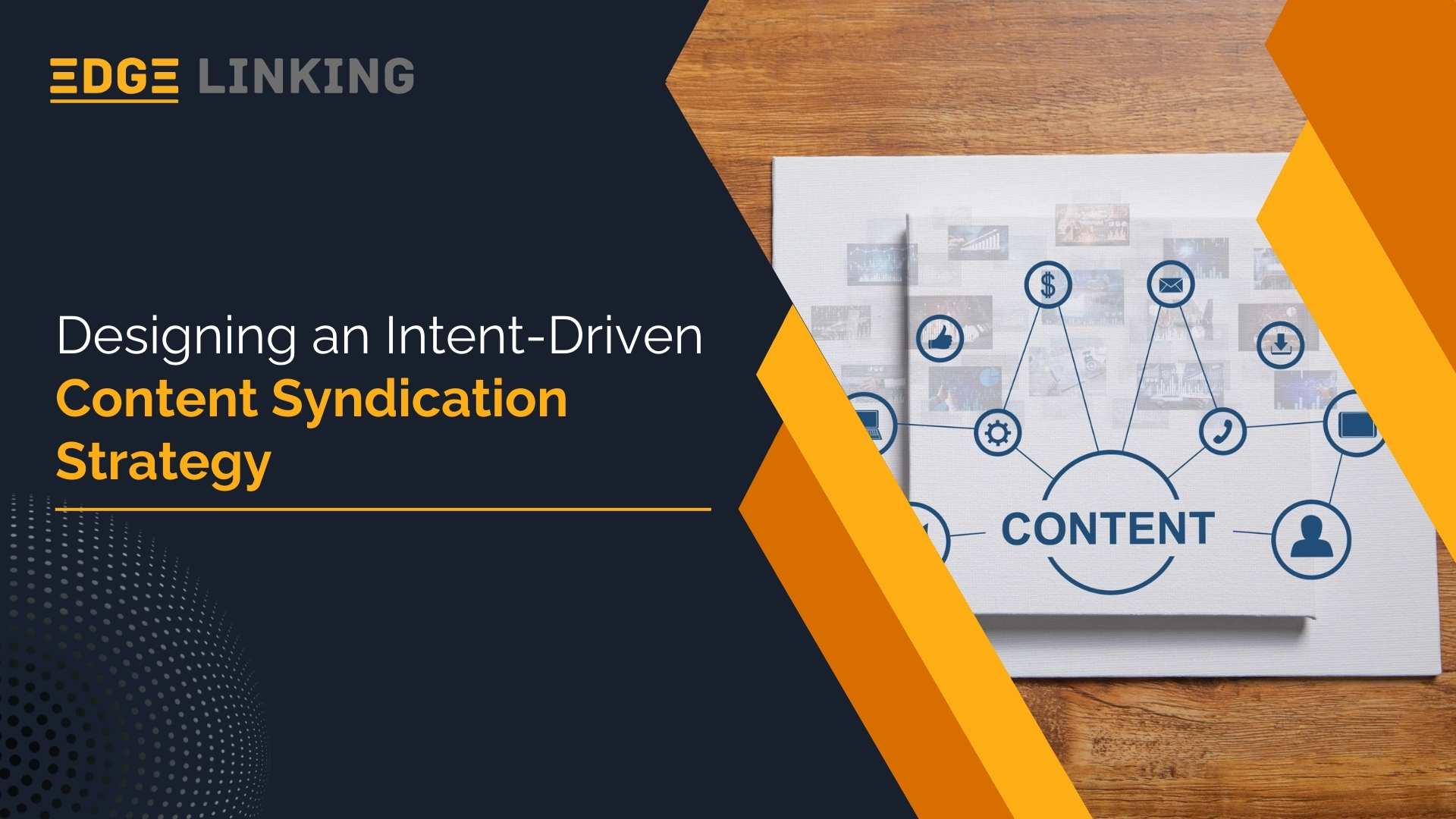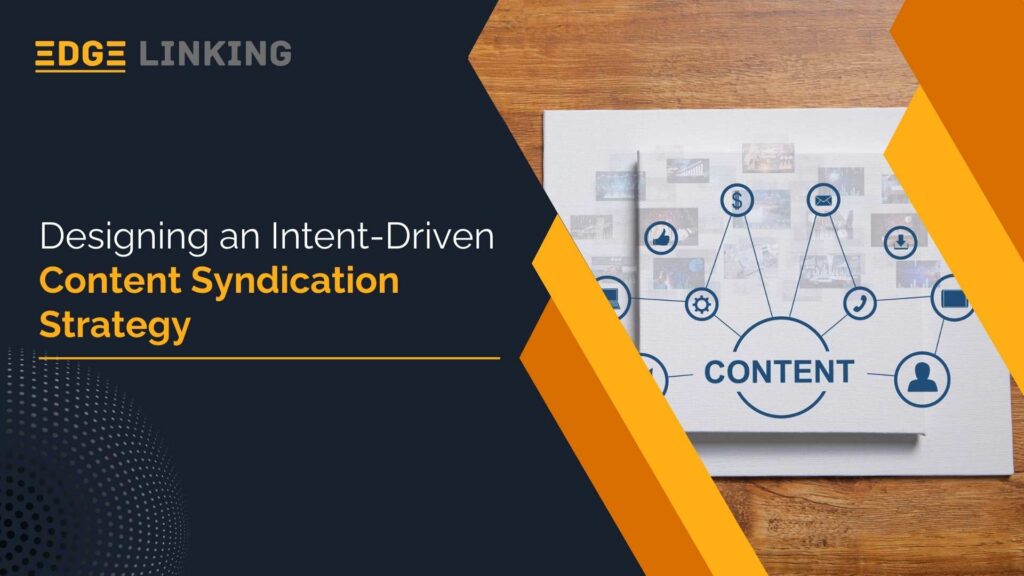Your marketing team launches an asset tailored to your target market. It gets published across multiple syndication channels, reaching prospects. But when the leads start coming in, most of them are not interested. The result? A wasted investment in distribution and a frustrated sales team chasing cold leads.
Traditional content syndication focuses on broad reach. While it creates visibility, it often falls short in delivering qualified leads. In B2B, you don’t need more leads; you need leads showing purchase intent.
This article will discuss how to design a content syndication strategy using intent data.
Why Intent-Driven Content Syndication Matters
Here’s why intent matters in content syndication.
1.Cuts Through the Oversaturated Markets
Buyers are already flooded with information from countless vendors. With intent-driven syndication, you can focus only on accounts actively researching solutions.
Example: A cybersecurity firm identifies through intent data that fintech firms are consuming ransomware content. By syndicating a case study specific to this challenge, the firm ensures its content reaches engaged prospects.
2.Aligns Content with Buyer Journey Stages
Whitepapers may work for early awareness, while ROI calculators or customer success stories are more effective for decision-making. Intent data reveals whether a buyer is still in the awareness phase or the decision stage, allowing you to match the right asset.
Example: A SaaS platform notices a cluster of accounts exploring “employee retention tools.” They syndicate an eBook for early engagement, then follow up with an ROI benchmark guide.
3.Improves ROI
Intent-driven content syndication ensures that every dollar spent on distribution reaches accounts more likely to convert. It shifts the focus toward relevance, engagement, and impact.
Example: A cloud services company cut its syndication spend while doubling conversion rates by using intent data to filter accounts already evaluating multi-cloud solutions.
4.Future-Proofs Your GTM Strategy
As buyer behavior continues to evolve, Intent-driven syndication surfaces real-time buyer signals, helping companies adapt their messaging and targeting.
Key Metrics & KPIs for Measuring Success
The following are the metrics that you should track to measure progress.
1.Lead Quality Over Lead Quantity
In B2B, high lead numbers mean little without intent alignment. Measuring lead quality ensures you’re reaching the right audience.
Metrics: % of leads matching Ideal Customer Profile (ICP), % of leads with verified intent signals.
Example: A FinTech firm generated fewer leads through intent-driven syndication but achieved an increase in leads that matched profiles.
2.Engagement, Not Just Clicks
Tracking metrics like average time spent on content, repeat engagement, and asset progression reveals genuine interest.
Metrics: Content consumption rate, multi-asset engagement, repeat visits.
Example: A cloud infrastructure provider found that accounts engaging with at least two syndicated assets had a higher conversion rate.
3.Conversion Rates to Sales Opportunities
Monitoring the conversion rate of syndicated leads into Marketing Qualified Leads (MQLs), Sales Qualified Leads (SQLs), and opportunities.
Metrics: MQL-to-SQL conversion, SQL-to-opportunity rate, opportunity-to-close ratio.
Example: A SaaS security vendor tracked intent-driven leads and saw a higher MQL-to-opportunity conversion than traditional syndicated leads.
4.Pipeline Influence
Syndication should be directly tied to pipeline creation. Tracking influenced pipeline and closed-won deals shows whether it is a growth driver.
Metrics: % of pipeline influenced, % of closed-won deals sourced from syndication, cost per influenced opportunity.
Example: A manufacturing automation company attributed $5M in influenced pipeline to its syndication strategy after aligning assets with accounts showing intent around “digital twin technology.”
5.Cost Efficiency
Intent-driven syndication reduces waste by targeting only engaged accounts, lowering cost per qualified lead (CPQL).
Metrics: Cost per MQL, Cost per Opportunity, ROI per campaign.
Example: A software provider reduced CPQL, filtering out low-intent accounts from its syndication strategy.
6.Account Progression Across the Funnel
Tracking how target accounts progress through the funnel highlights syndication’s long-term value.
Metrics: Account engagement score, funnel velocity, deal acceleration.
Example: A healthcare IT firm used syndication to nurture cold accounts and saw a faster deal cycle among accounts consuming relevant syndicated content.
Best Practices for Intent-Driven Syndication Strategy
Here are the best practices to implement in intent-driven content syndication.
1.Define Your Ideal Customer Profile (ICP)
Without a clear ICP, even intent-driven campaigns risk generating leads that don’t convert. Use intent signals to refine your target accounts.
Example: A cloud-based HR platform identified enterprises in North America with active searches for “employee engagement software.” By targeting this ICP, their syndicated content generated higher engagement.
2.Leverage Intent Data to Prioritize Accounts
Focusing on accounts showing high-interest activity ensures your resources go to accounts most likely to convert. Combine multiple data points with competitive content.
Example: A cybersecurity provider prioritized accounts researching “zero-trust network access” and tailored whitepapers and webinars directly to them.
3.Ensure Cross-Functional Collaboration
Marketing should share intent insights with sales to inform outreach, while sales feedback should refine targeting and messaging.
Example: A manufacturing technology company shared syndicated content engagement dashboards with its sales teams.
4.Measure, Iterate, and Optimize
Success depends on the measurement of engagement, lead quality, and conversion rates. Regularly review campaigns to identify high-performing content, channels, and audiences.
Example: A cloud services provider analyzed asset performance and reallocated budget to top-performing syndicated content.
5.Maintain a Multi-Channel Syndication Approach
Use a mix of email, partner networks, industry publications, and social platforms while leveraging intent data to prioritize channels.
Example: A fintech company distributed research papers via partner portals and niche industry newsletters targeting CFOs actively evaluating digital payments solutions.
6.Focus on Personalization
Intent-driven syndication allows personalization by tailoring subject lines, landing pages, and content recommendations based on buyer intent.
Example: A SaaS provider customized webinar invites accounts showing high intent around “AI-driven CRM solutions,” resulting in a higher registration rate.
7.Invest in Technology and Automation
Advanced intent tools help automate targeting, lead scoring, and engagement tracking. It ensures the timely delivery of content to high-intent accounts while providing performance insights.
Example: A logistics software provider integrated intent data into its syndication platform, pushing relevant case studies to accounts actively researching supply chain optimization.
Conclusion
Intent-driven syndication is a framework for continuous improvement. As intent data evolves, you can adapt quickly to keep pace with buyer behavior. Your brand not only captures attention but also stays relevant throughout the decision-making process.
If your goal is to maximize ROI and build a sustainable pipeline, now is the time to rethink your approach. Start designing your strategy today and position your organization to convert intent into impact.






